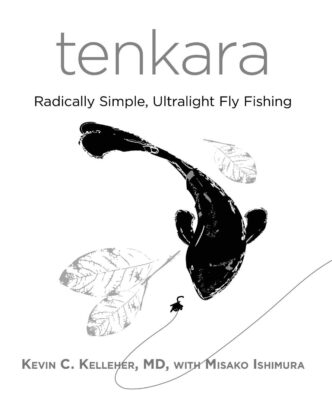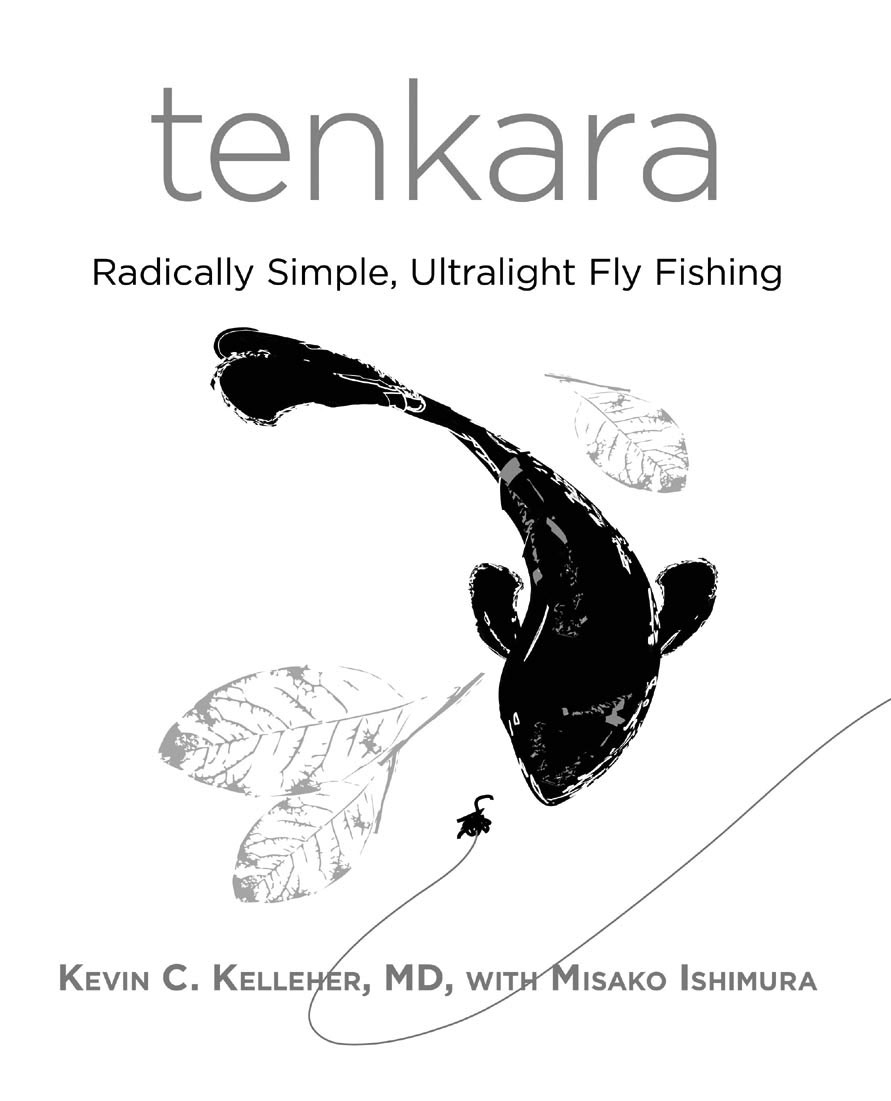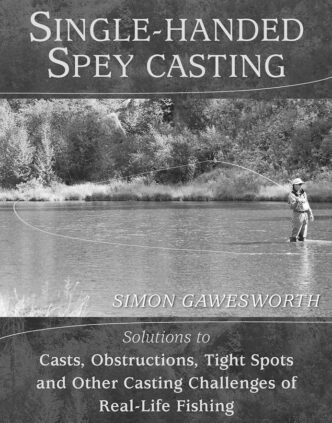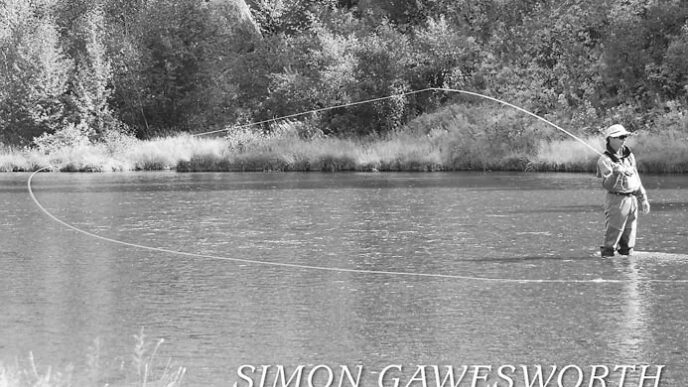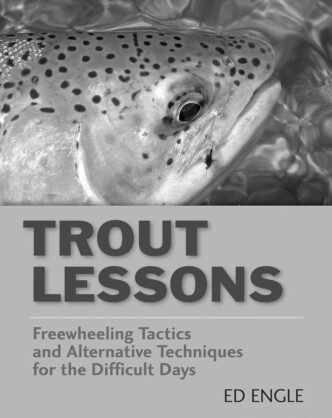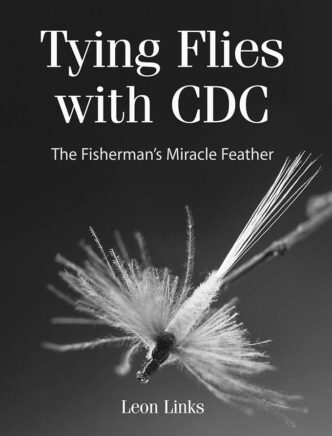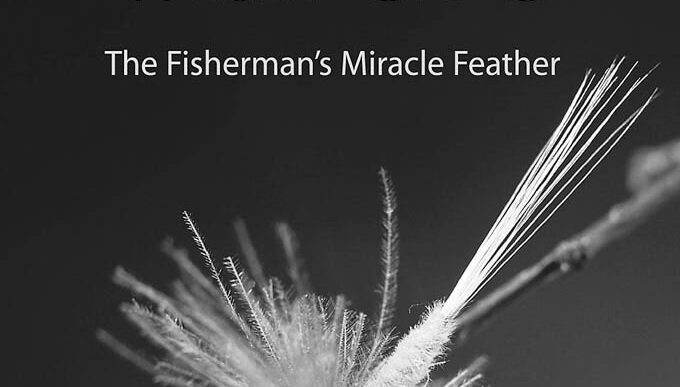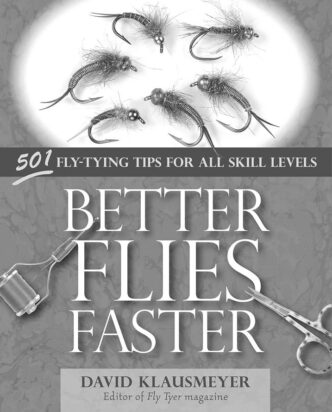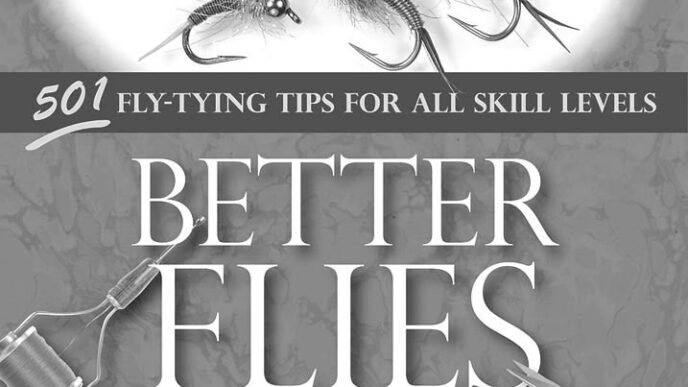Tenkara: Radically Simple, Ultralight Fly Fishing
By Kevin C. Kelleher, M.D., with Misako Ishimura. Published by Lyons Press, 2011; $21.95 softbound.
There’s a lot of misinformation in the fly-fishing world about tenkara rods and tenkara angling. In its modern form, this Japanese technique employs a long, carbon-fiber rod of between 11 and 13 feet that telescopes into its handle, an attached line of about the same length, no reel, and, in its original conception, an interesting style of wet fly, the kebari. Based on that description, some people dismiss it as “dapping,” old-fashioned fishing with a “cane pole,” “high-sticking,” or fly fishing with a crappie rod. Some have summed up these comments by asking what tenkara rods can do that an ordinary fly rod can’t.
The answer to that has two parts, which in fact are related. The first has to do with length. You can do more in terms of mending and keeping most of the line off the water, thus avoiding drag, with a tenkara rod than you can with your basic 9-foot fly rod, yet you can still collapse it to navigate the streamside vegetation, something that can be a nightmare with even a shorter rod.
But the main thing that a tenkara rod can do that an ordinary fly rod can’t is get rid of a lot of the things that go with fishing with an ordinary fly rod — starting with a reel, but also including a series of extra spools with specialized lines, a heavy vest full of jam-packed fly boxes, and all the other appurtenances that we believe we can’t do without. Taken together, this means that you can fish many streams more easily and more simply.
That’s what Kevin Kelleher, like many in the growing cadre of tenkara enthusiasts, finds so attractive. (For an evaluation of tenkara fishing, see Ralph Cutter’s “Under the Alders” column in this issue.) The chapters of Tenkara: Radically Simple, Ultralight Fly Fishing are set off by epigraphs from Thoreau and Emerson, John Muir, and similar kindred spirits, and Kelleher is himself an ultralight backpacker who agrees with Thoreau’s exhortation “Simplicity, simplicity, simplicity! I say let your affairs be as two or three, and not a hundred or a thousand; instead of a million, count half a dozen, and keep your accounts on your thumbnail.”
For some — and for most of us, sometimes — all the extra stuff that goes with fly fishing is part of the attraction. Elegant and ingenious contrivances such as high-end reels have an appeal on their own right, and a classic Hardy Lightweight has its own kind of simplicity. But for some — and for most of us, sometimes — it all gets to be a bit too much. At the very least, tenkara offers a viable way to get out and just fish. That can be a good thing, sometimes — even a necessity.
There’s a lot to be learned about tenkara here, beyond what you can find on the website for Tenkara U.S.A. (http://www.tenkarausa.com) or in interviews with its proprietor, Daniel Galhardo (see, for example, “California Confluences” in the November/December 2009 issue of California Fly Fisher). Contrary to what many assume, casting is an important part of tenkara fishing, and while most fly fishers already know how to cast, even the basic overhead tenkara cast in fact differs in subtle ways from the overhead cast with an ordinary fly rod — more vertical, like a steeple cast. Also, other casts, including the bow-and-arrow, frequently come into play. There’s a discussion of how to make your own tenkara lines — both level lines and tapered lines resembling furled leaders or tapered mono leaders. And the discussion of how to rig and fish a tenkara rod is comprehensive.
In addition, Kelleher dispels the myth that tenkara is only for fishing small streams. It excels at that, but as everyone who fishes big water knows, the way to do it is to edit it down into the smaller components where the fish are actually likely to be, and tenkara fishing works just fine in such situations. The video of Craig Mathews fishing a tenkara rod that Ralph Cutter mentions in his column (see http://www.blue-ribbon-flies.com/how-to/craig_fishing_tenkara_rod_on_madison) is on the Madison just outside Yellowstone National Park, which is not exactly a narrow mountain rill, but Mathews is fishing a riffle. You can pick pockets there all day with a tenkara rod.
If you already are a fly fisher, though, you may have to work to find out what you want to know in this book. It is framed as an introduction to fly fishing as such, with tenkara as the easy way to get involved and to involve others, especially children, not as an introduction to tenkara for fly fishers. Consequently, for those likely to read this review, ironically, a whole lot of the sort of superfluous details against which Thoreau inveighed tend to get in the way. The result sometimes sounds a bit like Polonius advising Laertes in Hamlet, with so many fly-fishing truisms for the beginner to keep in mind that the simple mindfulness that tenkara encourages may seem difficult to attain.
In the process, Kelleher assimilates tenkara fishing to Western fly fishing, for example by focusing on standard Western fly patterns at the expense of a more detailed discussion of kebari, with their forward-canted hackles that pulse in strong currents and when manipulated by the rod. He also makes excursions into techniques such as Czech nymphing and indicator fishing at the expense of more focus on what we in the West can learn from current prominent tenkara anglers, such as Dr. Hisao Ishigaki whom he cites, or Misako Ishimura, who consulted on the book, a Federation of Fly Fishers certified casting instructor who teaches both Western and tenkara techniques in the United States and around the world. Tenkara: Radically Simple, Ultralight Fly Fishing left me wanting to know even more about tenkara itself. But that can be a good thing, too.
Bud Bynack
Fly Tying: 30 Years of Tips, Tricks, and Patterns
Edited by Jim Butler. Published by Fly Rod & Reel Books, 2010; $29.95 softbound.
As Ted Leeson notes in the introduction to Fly Tying: 30 Years of Tips, Tricks, and Patterns, this is “essentially an anthology — comparatively rare in the literature of fly-tying.” Published in The Best of Fly Rod & Reel series, it’s a compilation of fly-tying features and columns from that magazine. If this were a “best of ” anthology album of hit songs, though, it would be called The Best of Darrel and A. K., because about half the collection consists of fly-tying columns by Darrel Martin and A. K. Best, backed up by features from contributors such as Jay “Fishy” Fullum, Harry Murray, the late Sylvester Nemes, and Mike Martinek, all of whom, like studio musicians, could solo in their own right.
It’s hard to review an anthology like this, because it is intended to have something for everybody, but I’m just me. One thing became clear from the start. Even though I’m a longtime subscriber to the magazine, I’d forgotten some of the columns and features that I found most interesting here, including Angler of the Year profiles of materials innovator John Betts and tool inventor Frank Matarelli, plus a wicked pattern, the San Juan Worm Ball, by Dan Fink, a fly designed to drive both trout and purists nuts. There is also a helpful tutorial on tying with deer hair by Tim England that makes a whole lot of sense.
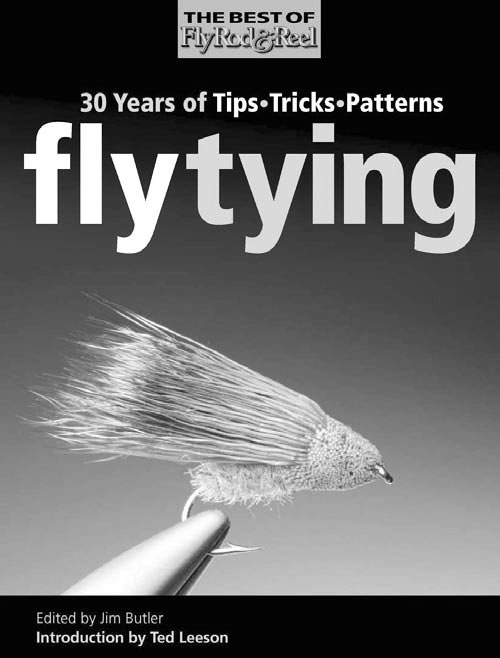
Your taste may differ, but I was most drawn to the features and columns by Darrel Martin, beginning with a refreshingly undogmatic discussion of fly proportions in which he declares that “most modern proportions are in fact based upon a capricious tradition. Proportion has less effect upon fly function and fish than it does upon our tying aesthetics — the fragile beauty we capture tying.” I particularly admire Martin’s knowledge of the history of fly tying and of little-known and oft-forgotten tying methods, such as clipped-hackle and married-thread fly bodies or the Barlow gallows technique for tying parachute hackle. In addition, there’s a column on Bill Logan and Bob Mead, tyers of super-realistic flies, whom I admire the way a pig admires an eagle, because they do things I can’t even imagine doing, not because I ever plan to try to do them.
I’ve never been drawn to A. K. Best’s dry flies, with their hackle-tip wings and what look to me like fat bodies in comparison with the elegant Catskill style, but I was taken by his “10-Minute Ties” recipe for a floating Hare’s Ear Nymph with an elk hair underbody and his quill-body version of the RS 2. A lot of what you’ll find here are practical applications of Best’s signature claim that fuzzy bodies do not match the actual bodies of naturals (hence his love of hard quill bodies) and his signature use of “T-base” turkey feathers for parachute posts. And I was happy to find the recipe for his Winged Beetle pattern, a fly based on his observation that unlike all other beetle patterns, “every beetle I’ve ever seen on the water has its wing tips visible just behind the shell back halves.” I remembered that he had developed a pattern, but I wasn’t about to root through my old copies of the magazine to find it.
There’s no doubt something similar here for everyone else, as well. Whatever your taste, in an anthology like this, the hits just keep on coming.
Bud Bynack
Matching Major Eastern Hatches: New Patterns for Selective Trout
By Henry Ramsay. Published by Headwater Books/Stackpole Books, 2010; $24.95 softbound.
“Dude, this is California Fly Fisher. Why are you reviewing a book on Eastern hatches?” Well, the answer is in the subtitle: it’s about new patterns — patterns conceived and developed by a thoughtful Pennsylvania angler, a longtime fly fisher, tyer, and guide, to catch picky fish.
Wherever you wet a line, new patterns, new materials, and new tying techniques are worth learning. What’s more, the perspective of someone who targets the pressured fish in the low-gradient streams of the Mysterious East can be illuminating, because despite globalization, the Internet, and increased angling tourism, the assumptions and practices of fly fishers still tend to the parochial. Like politics, all angling is local.
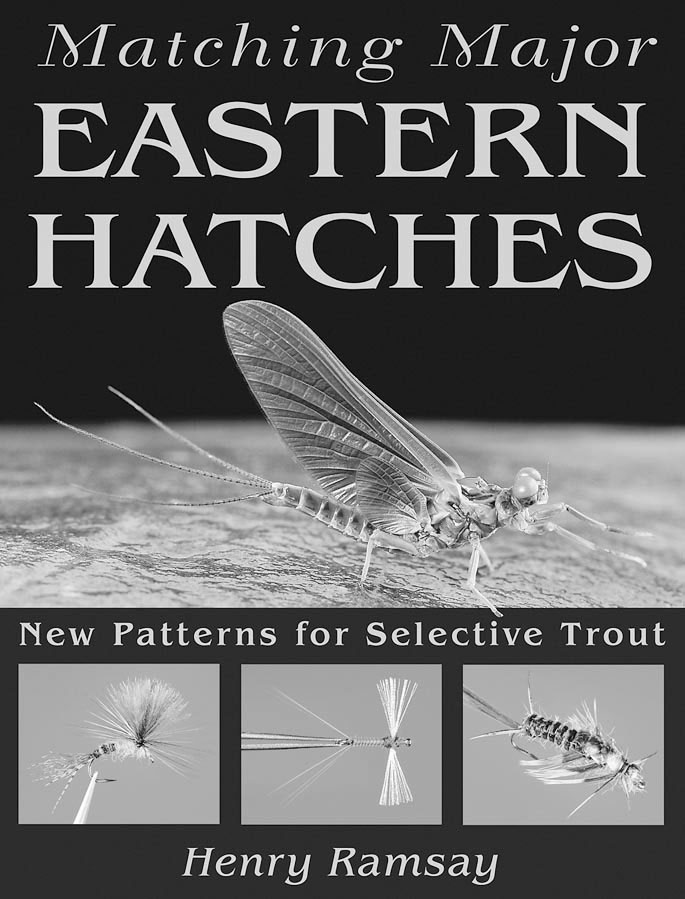
On top of that, how things have been done tend to determine how things are done, and local and regional traditions color everything from tackle preferences to how flies are designed and fished. The stereotyped difference between the tweed-clad East Coast angler smoking a pipe and fishing cane on the Beaverkill versus the tie-dyed-T-shirt-clad West Coast angler smoking something else and fishing a two-handed graphite rod on the Truckee is an exaggeration, but both images point to the influence of different traditions. The ghosts of Bill Schaadt and Polly Rosborough whisper somewhat different things than the ghosts of Theodore Gordon and Ray Bergman.
But ideas travel well. Fish, after all, are fish, and water is water. Insights that lead to effective flies can be applied to any similar environment. Setting aside the matching of specific hatches, East or West, what you’ve got here are some interesting ideas about how to tie effective flies. The ghost who whispers to Henry Ramsay is Vincent Marinaro, the Pennsylvania author of A Modern Dry-Fly Code. Ramsay credits the influence of a number of tyers, including some from the West, but the basic orientation of the book is established by its first chapter: “CDC Thorax Duns and Modernizing Marinaro.” The word that Marinaro most often whispers is “light.” This is not a new concern (Gary LaFontaine emphasized it), and Ramsay also focuses on color, profile, size, and imitating natural behavior, but like Marinaro, especially for flies fished on or in the surface film, he stresses the use of materials that, whatever else they contribute, also result in realistic light patterns when the fly is on the water. For Ramsay, that means the liberal use of CDC (cul de carnard) and of various synthetics that were unavailable to Marinaro and that often are seen as anathema to traditionalists.
However, this is not A Postmodern Dry-Fly Code. Ramsay covers imitations of all the forms of aquatic insect life, from nymphs and pupae through emergers, adults, and mayfly spinners, plus ants. Although the book works its way through the Eastern hatches, as advertised, Ramsay lays out the rationale for and the tying steps to produce what are really a series of basic fly designs and their variations, conceived to imitate the nymphal, emerger, dun, and spinner forms of all the various sorts of mayflies — clingers, crawlers, burrowers, and swimmers — as well as all the stages of caddisflies and stoneflies. But despite the differences between Western and Eastern bugs, it’s no great stretch to match the hatches in this way wherever you live.
And there are some interesting ideas here, including recommendations for specific materials that achieve the kind of light patterns he desires (Frosty Fish Fiber for spinner wings, Medallion Sheeting and CDC for wings on emergers), plus design elements such as realistically shaped Thin Skin covered with epoxy, Mike Mercer style, for nymphal wing pads, and the elimination of those long, long tails on Trico spinners because they cause too much drag. Some approaches, such as building extended bodies out of foam on a needle mandrel, have been seen before, but I’m itching to try his recipe for large articulated mayfly nymphs such as the Green Drake and Hexagenia limbata.
You can probably fish nothing but black Woolly Buggers and catch trout, but sooner or later, selective trout get the attention of most fly fishers and fly tyers, and tying effective imitations becomes either a grudging necessity or an all-out obsession. Matching Major Eastern Hatches: New Patterns for Selective Trout has lots of interesting approaches to doing just that — no matter what you fish, or smoke, or wear, and no matter where you do it.
Bud Bynack



